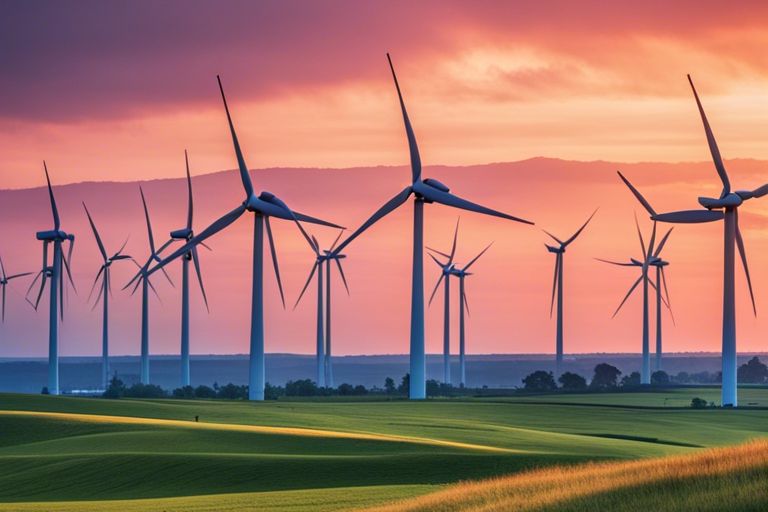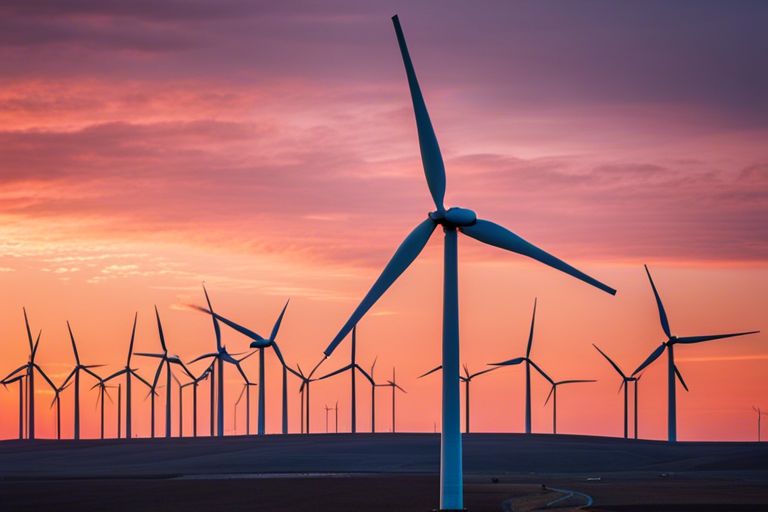Just when you thought you knew everything about wind turbines, prepare to be amazed by these 10 intriguing facts. From their history to their efficiency, this list will uncover the lesser-known aspects of these towering giants that harness the power of the wind. Get ready to research into the world of wind energy and discover some fascinating tidbits that will leave you in awe of these impressive structures.

Tallest Turbine Installed
Hub height over 500
While many wind turbines have impressive heights, some stand out for their incredible hub heights of over 500 feet. These towering structures are often installed in areas with high wind speeds, allowing them to harness more energy efficiently.
Feet above ground level
To put into perspective, many of these turbines have rotor blades that reach several hundred feet above the ground level. Assuming safety measures are in place, these turbines are able to capture stronger and more consistent winds at higher altitudes, making them more productive in generating electricity.
Assuming you were to stand at the base of one of these tall turbines, you would be amazed at the sheer size and scale of the structure towering above you. The blades alone can be as long as a football field, showcasing the impressive engineering and design that goes into these wind power giants.
Largest Rotor Diameter
Span over 500 feet
Some of the largest wind turbines in the world have rotor diameters that span over 500 feet. These colossal structures are designed to harness as much wind energy as possible, making them incredibly efficient at generating electricity.
Swept area’s massive size
Now, the swept area of these giant rotor blades is truly massive, covering an impressive expanse in the sky. This large swept area allows the turbine to capture more wind energy, resulting in higher electricity production.
Rotor blades with such vast swept areas are carefully engineered to withstand extreme weather conditions while maximizing energy output. The scale of these blades is a testament to the ingenuity and technology behind modern wind turbine design.

Fastest Rotor Speed
The fastest rotor speed ever recorded on a wind turbine is an impressive 225 mph, achieved by a prototype in Denmark. This rapid rotation generates significant amounts of electricity, showcasing the power of wind energy.
Tips reach 200 mph
To reach speeds of over 200 mph, wind turbine blades are designed with aerodynamic profiles that allow them to cut through the air efficiently. The shape and length of the blades are optimized to capture the maximum amount of wind energy.
- Blade design is crucial for achieving high speeds
- Aerodynamic profiles are key to efficiency
Any imperfections or damage to the blades can significantly impact the turbine’s speed and efficiency.
Incredible kinetic energy
Now, let’s talk about the incredible kinetic energy generated by these fast-spinning rotor blades on wind turbines. Kinetic energy is the energy possessed by a moving object, in this case, the rotating blades of the turbine. As the blades spin faster, their kinetic energy increases exponentially.
Incredible amounts of energy are converted from the kinetic energy of the spinning blades to electrical energy through the generator in the wind turbine. This process showcases the impressive efficiency and power of harnessing wind energy.
Most Efficient Turbine
Conversion rate high
Your wind turbine’s efficiency largely depends on its ability to convert wind energy into usable electricity. Turbines with high conversion rates are more efficient and cost-effective in the long run.
Maximum energy output
Assuming optimal wind conditions, the most efficient turbines can reach their maximum energy output potential. This means they can generate a significant amount of electricity consistently, making them a reliable source of renewable energy.
With advancements in technology, the latest turbines have been designed to maximize energy output while minimizing maintenance and operational costs. This makes them a sustainable and environmentally friendly option for meeting energy needs.
Oldest Operating Turbine
Still generating power
Not all wind turbines have a limited shelf life. In fact, one of the most fascinating facts about wind turbines is that the world’s oldest operating turbine has been supplying power for decades.
Over 40 years old
There’s a wind turbine in New Hampshire, USA, that has been spinning for over 40 years and shows no signs of stopping. Over four decades of continuous operation is a testament to the durability and longevity of well-maintained wind turbines.
A key factor in the longevity of this turbine is regular maintenance and upgrades to keep it running efficiently. It serves as a prime example of how older wind turbines can still be productive and contribute to clean energy generation.
Largest Wind Farm
Thousands of turbines
While many wind farms consist of a few dozen turbines, the largest wind farms have thousands of these towering structures spread across vast areas. These mega wind farms are capable of producing a significant amount of clean, renewable energy to power thousands of homes and businesses.
Covering vast areas
turbines
With wind farms covering vast areas, such as offshore locations or sprawling landscapes, the visual impact of these installations can be quite staggering. These massive wind farms are a testament to human engineering and innovation in harnessing the power of the wind to generate electricity on a large scale.
Deepest Offshore Turbine
Water depth over 150
Little is known about the challenges of installing wind turbines in water depths exceeding 150 meters. The engineering feats required to secure these turbines in such deep waters are nothing short of remarkable.
Feet below sea level
Over 295 feet below sea level, these offshore wind turbines set a new standard for deep-sea energy harnessing. The technology involved in designing and maintaining these turbines at such depths is cutting-edge.
You can hardly fathom the depth levels at which these turbines operate. The extreme conditions they withstand demonstrate the immense progress in offshore wind energy technology.
Quietest Turbine Design
Minimizing noise pollution
Many modern wind turbines are designed with noise reduction in mind. By carefully designing the shape of the blades, the orientation of the turbine, and the materials used, engineers can help minimize noise pollution. These advancements have made wind turbines quieter than ever before.
Silent operation achieved
If wind turbine noise is a concern, rest assured that advancements in technology have made silent operation a reality. With sound-absorbing materials and innovative blade designs, the noise emitted by wind turbines is greatly reduced. This allows wind farms to be set up even in residential areas without causing disturbance to the residents.
Clearly, reducing noise levels without compromising the efficiency of the turbine is a key priority for manufacturers. In addition to the design and materials used, factors such as the distance between turbines and residential areas also play a crucial role in ensuring silent operation.

Most Powerful Turbine
Output over 10 MW
Some of the most powerful wind turbines today can generate an output of over 10 MW, which is equivalent to the energy produced by hundreds of traditional turbines. These mega wind turbines are designed to harness more wind energy and maximize electricity production.
Massive electricity generation
Little known fact, these powerful turbines are capable of generating electricity for thousands of homes and even entire communities. Most of them are strategically placed in areas with high wind speeds to ensure maximum efficiency in electricity generation.
Summing up
Conclusively, wind turbines play a crucial role in generating clean and sustainable energy. As highlighted in the 10 fascinating facts above, these structures are not only impressive in size and power capacity but also have significant benefits for the environment and economy. Understanding these facts helps shed light on the importance of wind energy in our quest for a greener future.
